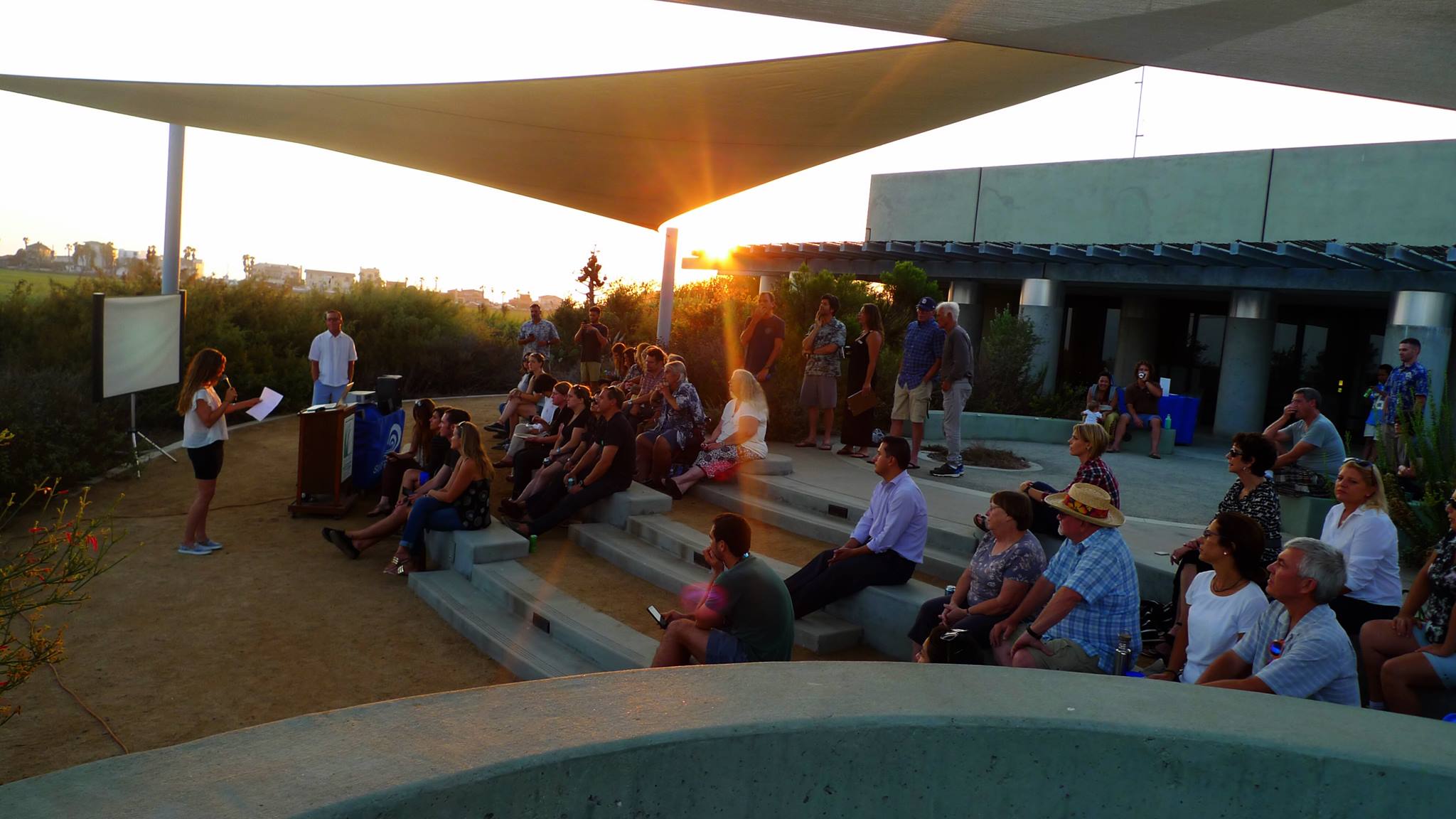

By Laura Walsh
On July 27th, Surfrider San Diego members and guests gathered in a small amphitheater at the Tijuana Estuary Visitor Center in Imperial Beach for a quarterly chapter meeting hosted by the No Border Sewage Committee (NoBS). As the sun set over one of the last and largest intact wetlands in California, three speakers discussed issues plaguing the Tijuana River as well as the people who are determined to find creative solutions.
The 1,750 square miles of the Tijuana River watershed squats on the border of San Diego and Mexico, where it funnels rain and snowmelt from both countries to the Pacific Ocean. With the rain comes the urban runoff, which has made the collection basin infamous. One can find an invasion of tires and plastic trash throughout the estuary after an especially hard rain. Perhaps more disconcerting are the less visible pollutants that threaten human health and cause beach closures in San Diego throughout the year. Chapter meeting speakers Jeffrey Knox, Doug Liden, and Margarita Díaz represented a spectrum of stakeholders focused on cleaning up this pollution problem.
Jeffrey Knox, an Imperial Beach local and lifelong surfer, opened the evening with a history of surfing in the area, complete with black and white film photos of the local beach scene during the 70’s. Nostalgic images of serious young lifeguards and their days spent on the coast were interspersed with snapshots that hint at the real narrative about surfing in IB over the last few decades: curling peaks that have gone unridden because the water was too dirty to surf.

Doug Liden, an Environmental Engineer at the U.S. Environmental Protection Agency (EPA), talked to audience members about some of the ways U.S. and Mexican governments are working to tackle wastewater and stormwater issues at the border. With Liden on the team, the EPA has invested in wastewater treatment projects and programs to treat millions of gallons of sewage every day that would otherwise end up in the estuary.
Margarita Díaz, Director of the nonprofit organization Proyecto Fronterizo, closed the evening with the story of how grassroots efforts are targeting the pollution problem at its source. Proyecto Fronterizo uses education to inform local restaurant owners of the negative impacts of single-use serving materials. Díaz has also helped initiate a certification standard, “Restaurante Amigo del Mar,” that recognizes restaurants with ocean-conscious practices.
All three presenters expressed hope for a future where the Tijuana River Estuary is part of a cleaner and healthier region. Surfrider is committed to being a part of this change, and will be participating in this October’s Tijuana River Action Month (TRAM), hosted by the Tijuana River Action Network (TRAN). To learn more about how you can help out at TRAM events, visit http://www.tjriveraction.net/about/
